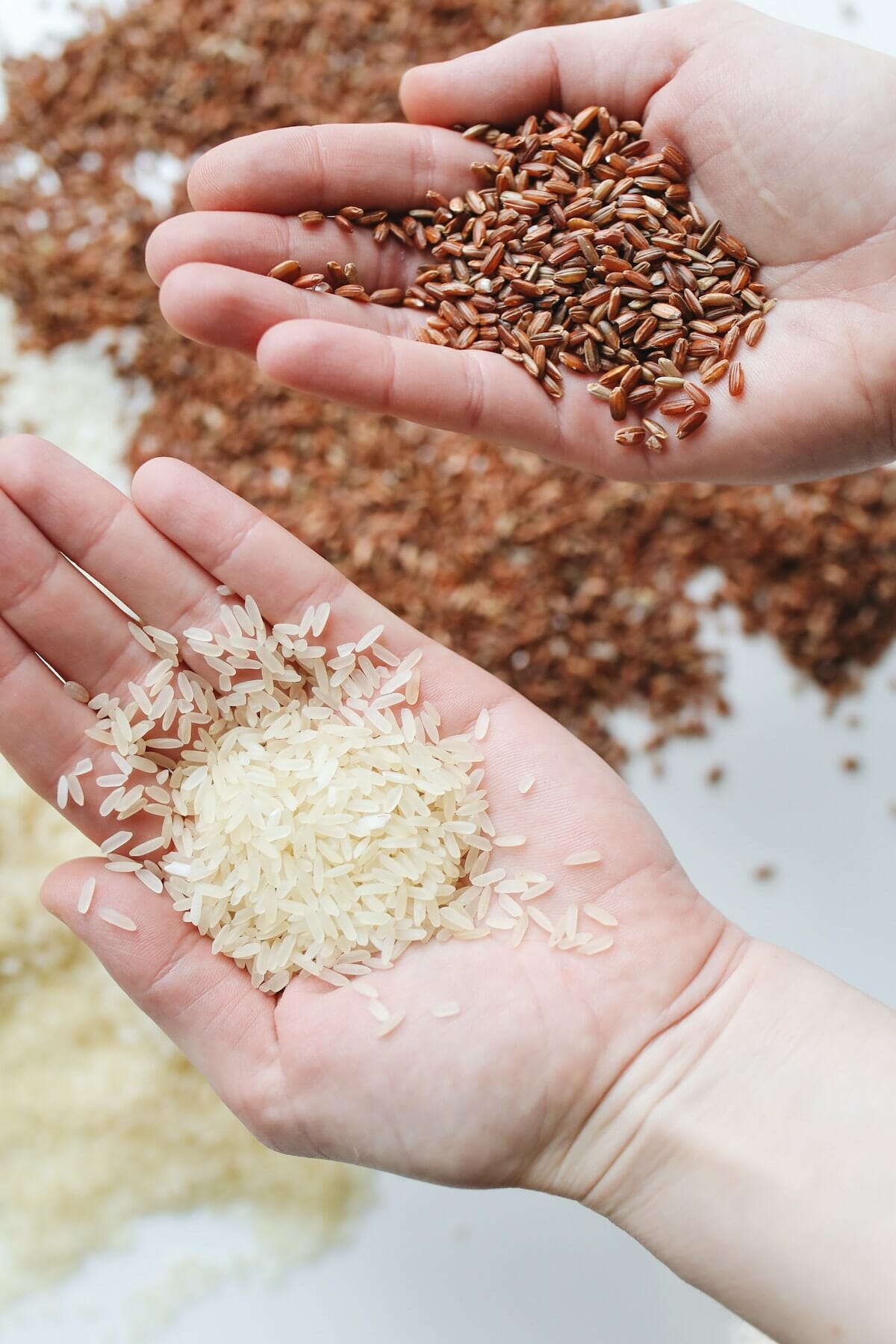Jasmine rice is a fragrant side dish in many Thai and Asian dishes, and people more commonly eat it in its refined, white form. However, consuming high carbohydrate foods, such as white rice, in excess has links with health conditions, including obesity and an increased risk of disease. Therefore, choosing whole grain varieties is more beneficial to health.
Whole grain rice has more beneficial nutrients than white rice, as it can help someone feel more full, while their body is more able to balance their energy. However, all types of rice can contain toxic arsenic.
Jasmine rice originated in Thailand. Local people refer to it as Thai Hom Mali Rice, and they have developed superior varieties since a local farmer discovered it in 1945.
An aromatic amino aldehyde gene gives jasmine rice its distinctive flavor and fragrance, and it cooks to a soft, fluffy texture.
People use white jasmine rice more commonly, but brown varieties are also available. Uncooked white grains have a polished, clear, and glossy appearance.
Jasmine rice is suitable for Asian dishes such as Thai stir-fries, congee, and rice puddings.
Nutritional profile
The nutrition profile of jasmine rice is similar to regular white rice, with comparable amounts of calories, macronutrients, and calcium.
A 150 gram (g) serving of cooked white jasmine rice has the following nutrients:
Nutrient Amount
per cooked
150g serving
Energy 200 kcal
Protein 4 g
Fat less than a
gram
Carbohydrate 46 g
Fiber 1.05 g
Calcium 19.5 mg
Additionally, whole grain rice varieties contain beneficial nutrients, such as magnesium, selenium, and B vitamins.
Rice is a high carbohydrate food, so the health risks and benefits of eating it are similar to those of other carbohydrates. People can include carbohydrates as part of a nutritious diet, but if they eat too much of this food type and perform little physical activity, they may increase their weight as well as their risk of chronic diseases.
Brown or white rice?
The health benefits of jasmine rice depend on whether it is white or whole grain.
White rice is polished, and manufacturers remove the germ and bran from the grains, making it a refined grain. Conversely, whole grain rice contains these beneficial parts of the grain, which add fiber to someone’s diet and can slow down the release of blood sugar.
The American Diabetes Association (ADA) advises that white rice typically has a high glycemic index and glycemic load, which can cause spikes in blood glucose. Additionally, the ADA indicates that populations that eat more refined grains, such as white rice, have a higher risk of diabetes.
In contrast, brown jasmine rice contains fiber that helps slow the digestion of carbs in the body.
Additionally, according to data from the USDA Food Data Center, brown jasmine rice has slightly more protein and fiber compared to white, but it does not contain the calcium that white rice does. Additionally, antioxidants, such as anthocyanins, which protect the body from free radicals, are also higher in whole grain rice.
According to the Dietary Guidelines for Americans 2020–2025, although Americans meet recommendations for total grain intakes, 98% fall below what the government recommends for whole grains, while 74% exceed limits for refined grains.
Health experts recommend that people include whole grains in their diet because research links them to a lower risk of cardiovascular disease, cancer, respiratory diseases, and other chronic diseases.
Arsenic in rice
Rice contains arsenic, a neurotoxic substance that can cause cancer.
The 2016 Food and Drug Administration (FDA) report on arsenic in rice and rice products advised that the risk of cancer increases with rice consumption and that unborn babies are susceptible to adverse health effects from maternal intake.
Furthermore, the report highlights that eliminating rice and rice products from the diets of infants and children under the age of 6 years could reduce their lifetime cancer risk by 6% and 23%, respectively.
Additionally, the FDA advises that rinsing rice has a variable impact on reducing arsenic content but also reduces enriched B vitamins and iron.
Finally, the FDA notes that they need to conduct more research to obtain additional information about the risk of arsenic in rice.
Summary
Jasmine rice has a distinctive aroma and flavor that makes it suitable for Thai and other Asian dishes. Most people use the white variety of jasmine rice, a refined carbohydrate with a high glycemic index.
However, eating too many refined carbohydrates has associations with certain health conditions, such as obesity, diabetes, and cardiovascular disease, but including whole grains in the diet has health benefits.
Therefore, it is best when choosing rice to opt for whole grain options to reduce the risk of adverse health conditions.
Additionally, rice contains arsenic, which is toxic to the body. It may be beneficial for infants and children under 6 years old to limit their rice consumption and rice products. A pregnant person can also pass on these toxic compounds to their fetus, so they should be mindful of how much rice they eat.
Source: https://www.medicalnewstoday.com/articles/is-jasmine-rice-healthy?utm_source=Sailthru%20 Email&utm_medium=Email&utm_ campaign=MNT%20Daily%20 News&utm_con tent=2021-08-20
&apid=37763034&rvid=3424e32faa971ce2c1b02d01eed1022831fc564614ad3f53b1cc99363570ba22#arsenic-in-rice










